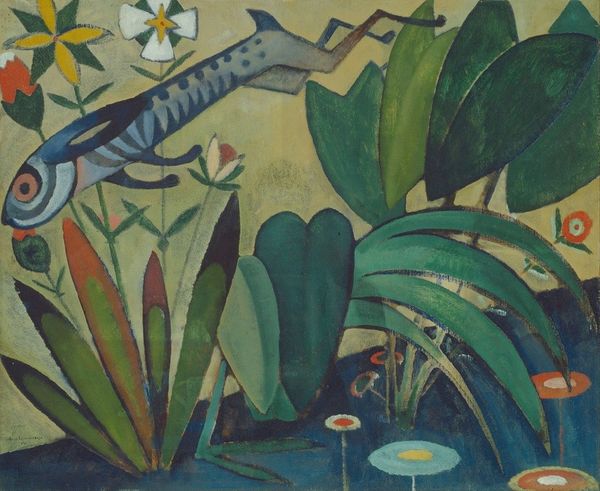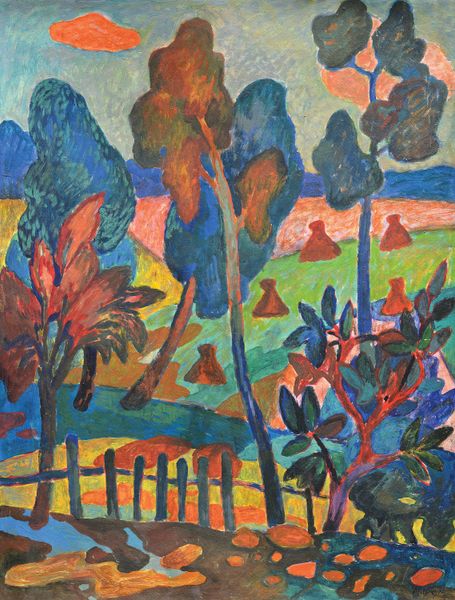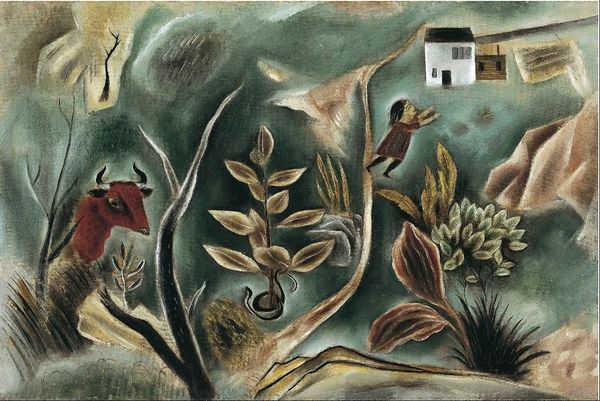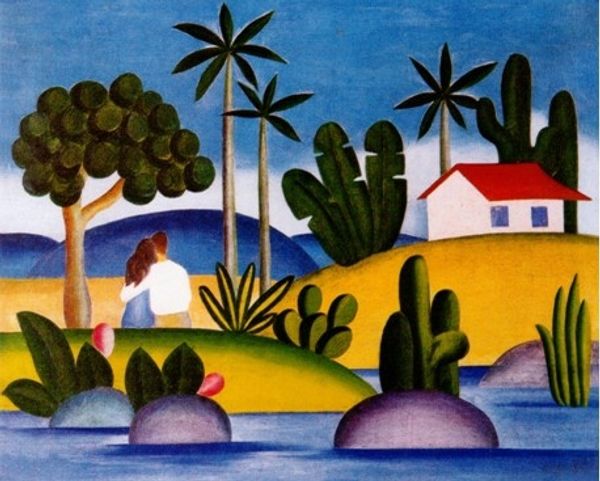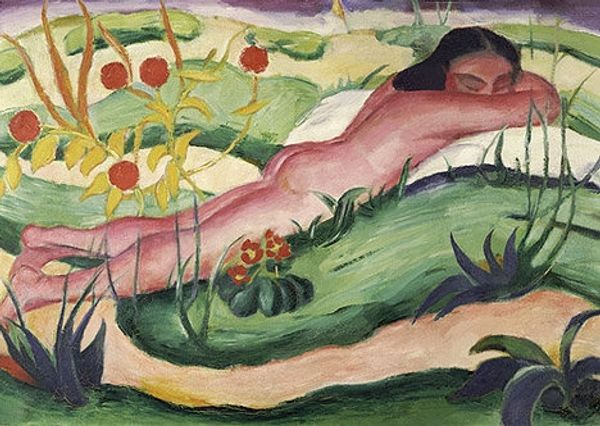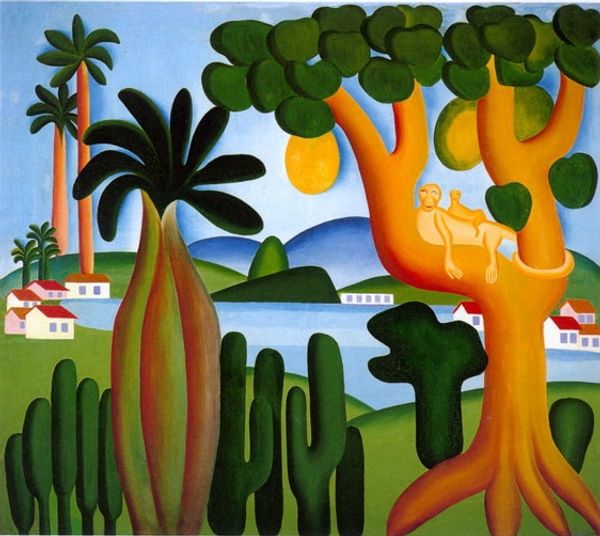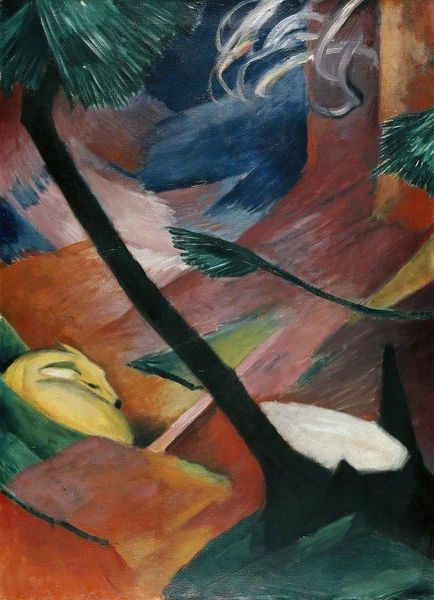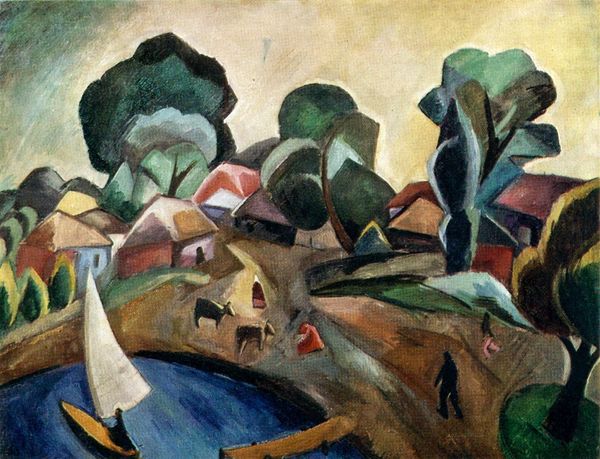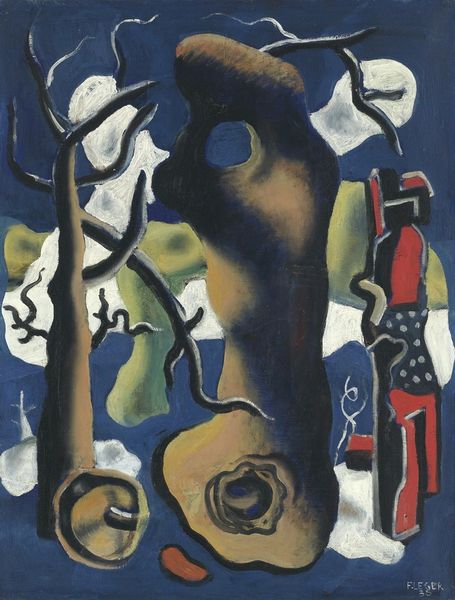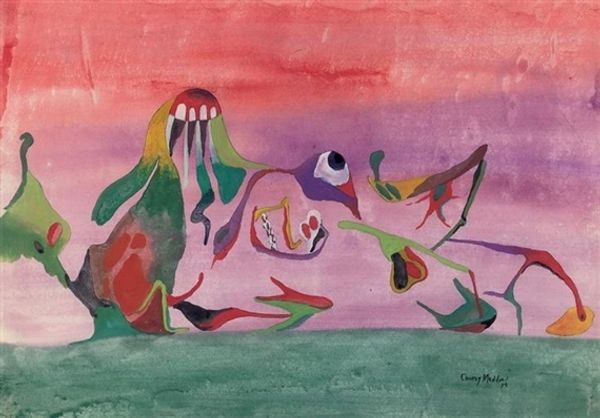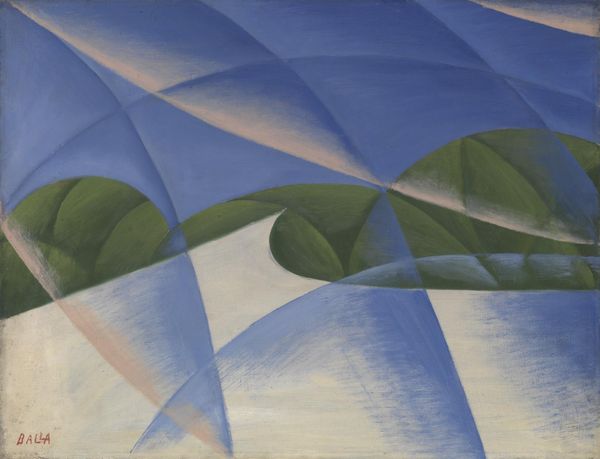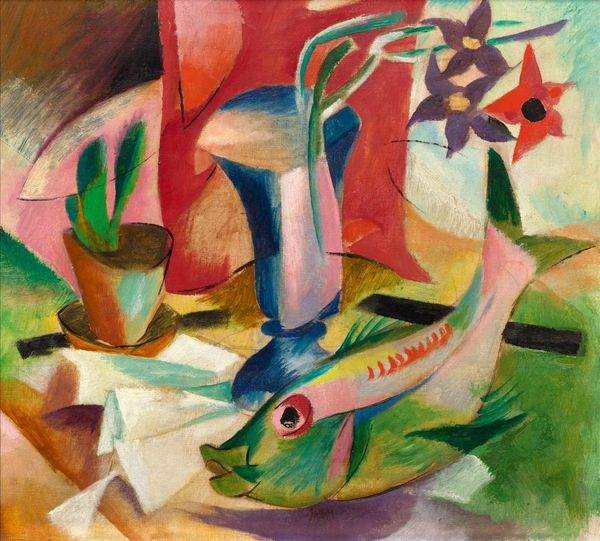
painting, acrylic-paint
#
painting
#
landscape
#
acrylic-paint
#
figuration
#
naive art
#
abstraction
#
modernism
Copyright: Tarsila do Amaral,Fair Use
Curator: Tarsila do Amaral created "The Lake" in 1928, using acrylic paint on canvas. It’s a modernist landscape painting currently held in a private collection. Editor: My initial impression is one of almost childlike wonder. The colours are muted yet vibrant, and the forms are so simplified that they feel dreamlike. Curator: Indeed. There's a certain artlessness to the forms. I'm particularly interested in the use of acrylic, allowing her to achieve that flat, matte finish, so distinct from the oil paintings of that period. It's so smooth, giving a machine-like quality, very modern. Editor: I agree. But consider the iconography. That central blue figure, almost swan-like, could represent a deity or spirit overseeing this land. The simplified plants almost seem to possess symbolic meanings beyond mere representation. And I also notice that the use of pink on what appears to be a tree on the right, which provides the touch of vibrancy to the scene and helps to set the theme to almost a childlike setting. Curator: Interesting point. I see a tension between her modern approach to materials and production, like that smooth paint surface. And the work contains social commentary related to her work within the anthropophagy movement in Brazil, that's very much in contradiction with such interpretation, since anthropophagy calls for consuming other's culture. She is literally applying layers on top of each other. Editor: I think the simplified, rounded forms are less about direct critique, but are more to suggest this synthesis through symbolic reduction. I see in "The Lake" the artist is making something universal from very distinct sources and her imagery helps this along. Curator: Perhaps the use of industrial paint allows a certain flattening of experience and culture? I cannot imagine how challenging that would be considering the limited accessibility of paints that this artists, perhaps, could access at that time and what those limited choices implied for production and availability of that supply to other contemporary artists at the time. Editor: I believe you have changed my initial impressions here. Thanks to the cultural materials she chose as an influence and how this would then imply this process of 'flattening', in order to have something consumed or accessible at scale for the modern movement, does say a lot. The forms, colours, the material - they each contribute to something simultaneously innocent and insightful.
Comments
No comments
Be the first to comment and join the conversation on the ultimate creative platform.
